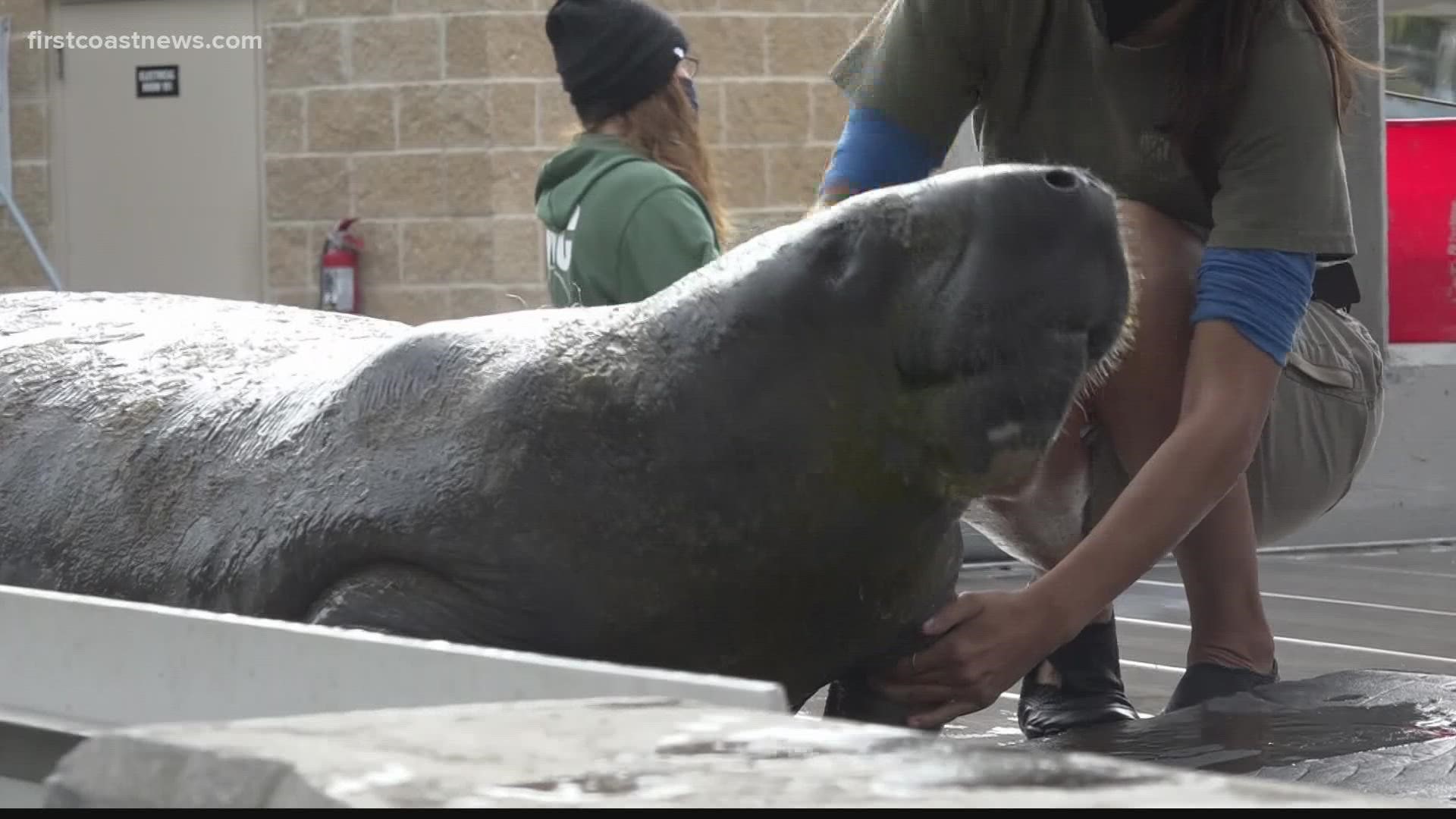JACKSONVILLE, Fla. — Editor's Note: The video above is from a previous story dated Feb. 2, 2022.
This year, the rate of manatee deaths in Florida is mirroring the pace set in 2021.
So far, 261 manatees were reported dead through Feb. 11, according to statistics from the Florida Fish & Wildlife Conservation Commission. By comparison, the number of manatee deaths during the same period last year was 299.
While the number has gone down a bit, it's still a sharp increase from manatee deaths in the same time period between 2017-2020, which averaged about 105 per year.
In the first three weeks of the year, the rate of manatee deaths remained relatively low, averaging about 43.5 per week. However, in the second three weeks of the year, that number jumped significantly to 71.3 per week.
Each week this year, the number of manatee deaths have increased.
According to the FWC, one of the reasons for the large increase in manatee mortality is the onset of cold weather in Florida.
"Over the last few weeks, temperatures have been fluctuated," according to Tom Reinert of the Florida Fish & Wildlife Conservation Commission. "We've seen an uptick in mortalities, likely a combination of the stressed nature the animals are already under with a lack of food resources in the Upper Indian River Lagoon and colder temperatures."
Reinert explained last year, about 1,100 manatees of a population estimated to be at around 8,000 died. However, he says manatee populations are still high compared to the low point in the 1990s.
"How this relates to the extinction probability, we have a core biological model that takes into account events such as this, red tide events, cold stress events and large one time mortality events," Reinert explained. "Even with something like this, the chance of manatees going extinct is well below one percent over the long term."
In a press conference Wednesday, the FWC says it plans to continue its experimental manatee feeding program at the Florida Power & Light Cape Canaveral Clean Energy Center near the Indian River.
The Florida Fish & Wildlife Conservation Commission and its partners began the program of feeding manatees lettuce early in the year. According to Reinert, the manatees began eating the lettuce on Jan. 20.
Since then, around 50,000 lbs of produce, mostly lettuce, have been fed to the manatees. Though the FWC says they are paying about at around $5,000 per shipment of produce, most of that is paid for through donations.
"Last Sunday, we had a low of about 60 animals [at the feeding site]. Then yesterday, the report estimated about 500 animals," Ron Mezich of the FWC said. "The fluctuation continues with the weather. We consider that a good thing because the animals are showing typical behavior we'd expect to see."
Mezich says the operation has scaled up recently to about 3,000 pounds of lettuce per day.
The operation feeds about 300-350 manatees per day, though that number fluctuates.
He added that as long as the chance of cold weather remains, crews will continue to feeding program. However, they hope to end it by March 31.
The Florida Fish & Wildlife Conservation Commission urges people to donate to the feeding program rather than trying to feed manatees on their own.
Reinert says the FWC is also expanding manatee rescue programs, which may also help to lower death rates. The company is involving partners to assist with rescues including Oceanaria and the US Fish and Wildlife Services. When a manatee is rescued, they will go to Oceanaria, Zoo Tampa, SeaWorld and the Jacksonville Zoo.
The FWC also plans to work with new partners including the Georgia Aquarium in Atlanta and Aquarium Encounters in the Florida Keys.
There is some good news. According to FWC, the amount of manatees killed by human interaction has decreased significantly this year. In fact, this year has had the lowest number of manatees reportedly killed by watercraft in five years.
The FWC reports seven manatees this year have died due to contact from vessels. There are also three other days that data blames on flood gate/locks and other human causes.
In 2021, there were 22 manatee deaths caused by vessels by Feb. 11. There has not been lower than 10 manatee deaths caused by vessels in the same time period since before 2017.
However, dealing with the steep increase in deaths means restoring the plants manatees feed on.
Recently, Gov. Ron DeSantis signed a bill that gives $8 million for projects that including restoring seagrass beds.
"Those projects are a long term process," Reinert said.
Reinart says the FWC is tracking the effect the recent spike in manatee deaths in the past two years has on the births of new calves. However, he added it may take years for researchers to fully know the effect.

